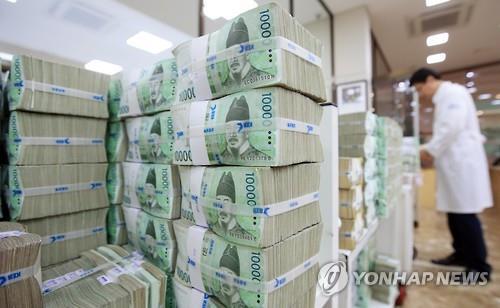Soured loans at Korea’s commercial banks rose to a 15-year high last year on a sharp deterioration in big-company debt quality, data showed Monday.
According to the Financial Supervisory Service, local banks’ nonperforming loans totaled 29.9 trillion won ($26.3 billion) at the end of 2015, up 5.7 trillion won from a year earlier. Of total loans, toxic debt accounted for 1.71 percent, up 0.16 percentage point from a year ago.

Last year’s bad-debt level was the highest since 2000, when post-crisis corporate restructuring was at its peak. In 1999, when the Asian financial crisis struck, the country’s banks had nearly 60 trillion won in toxic loans, which went down to 42 trillion won by 2000 and 18 trillion won the year after.
Compared to the more recent crisis which started in the U.S. and reached Korea in 2008, the 2015 tally is markedly higher. Bad loans stood at 14.7 trillion won in 2008, less than half of last year’s total, and 15.9 trillion won in 2009.
“Bad loans, which had moved between 18 trillion won and 25 trillion won in the years 2010-2014, shot up last year due to a sharp deterioration in the quality of loans extended to big companies,” the FSS explained.
Of the nearly 30 trillion won bad-loan total, large firms accounted for 59 percent, or 17.6 trillion won at the end of 2015. That is the largest since 2008, when comparable records began. It also marked the sharpest growth on record, rising by 7.3 trillion won from 2014.
Total bank loans to big corporations in 2015 came in at 436.7 trillion won, up 7.2 trillion won from the previous year.
The loan data comes as Korea debates how to recapitalize policy banks Korea Development Bank and Export-Import Bank of Korea, anticipating a new wave of corporate debt restructuring.
KDB, which in previous crises acted as the main state bailout body, holds 7.3 trillion won of troubled loans, while Korea Eximbank has 4 trillion won.
By Lee Sun-young (
milaya@heraldcorp.com)




![[Herald Interview] 'Trump will use tariffs as first line of defense for American manufacturing'](http://res.heraldm.com/phpwas/restmb_idxmake.php?idx=644&simg=/content/image/2024/11/26/20241126050017_0.jpg)

![[Health and care] Getting cancer young: Why cancer isn’t just an older person’s battle](http://res.heraldm.com/phpwas/restmb_idxmake.php?idx=644&simg=/content/image/2024/11/26/20241126050043_0.jpg)

